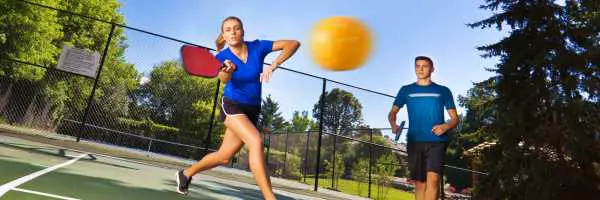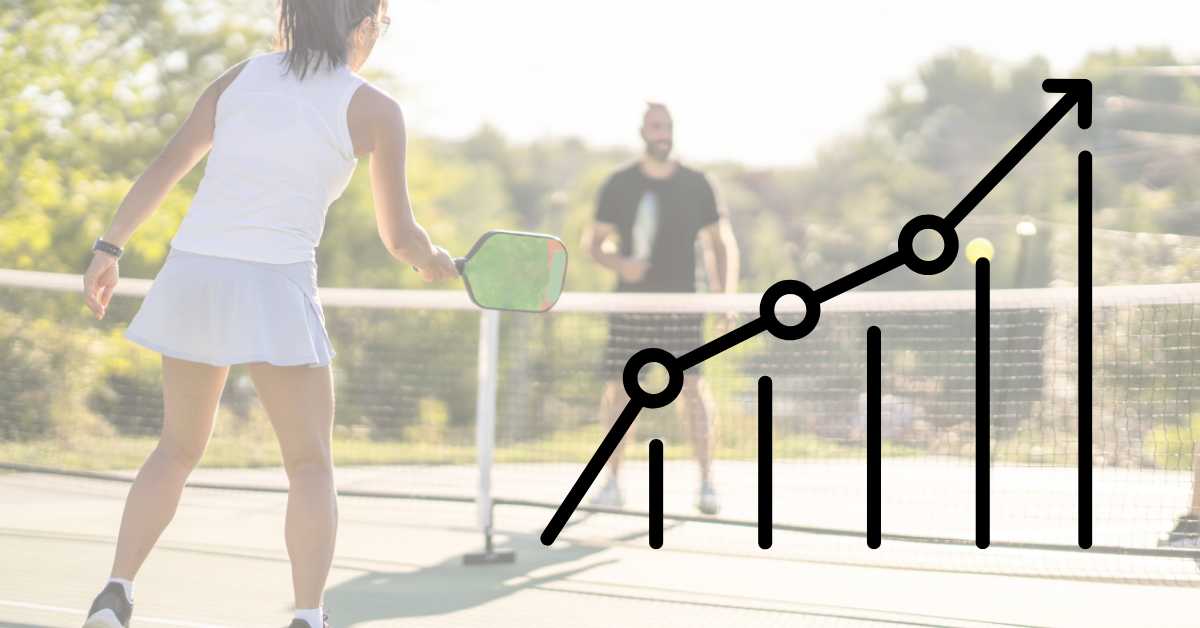This table provides a comprehensive set of SMART goals for pickleball players in various areas, including backhand accuracy, endurance, teamwork, serve consistency and power, game strategy, and dinking. By focusing on these specific objectives, players can effectively work towards improving their overall performance in pickleball.
| Goal Area | Specific | Measurable | Achievable | Relevant | Time-bound |
|---|---|---|---|---|---|
| Backhand | Improve backhand accuracy | Increase successful backhand shots by 15% | Dedicate 30 minutes of focused practice on backhand drills, 3x a week | Participate in a local pickleball league or tournament | Within the next three months |
| Endurance | Enhance endurance and agility | Reduce average recovery time by 20% | Incorporate 20 minutes of HIIT workouts, 3x a week | Attend regular pickleball practice sessions | Within the next two months |
| Teamwork | Develop on-court communication | Reduce miscommunication errors by 50% | Schedule weekly practice sessions with doubles partner | Enter doubles matches to apply improved communication and teamwork | Within the next two months |

| Goal Area | Specific | Measurable | Achievable | Relevant | Time-bound |
|---|---|---|---|---|---|
| Serve | Improve serve consistency and power | Increase successful serves by 20% | Practice serving drills for 30 minutes, 2x a week | Use enhanced serve during practice matches and tournaments | Within the next three months |
| Strategy | Develop better game strategy | Win 10% more points on strategic plays | Analyze past matches and identify areas for improvement, 1x a week | Apply new strategies in practice matches and competitive games | Within the next four months |
| Dinking | Develop a better game strategy | Increase successful dink shots by 25% | Practice dinking drills for 20 minutes, 3x a week | Utilize dinking skills in games to gain a strategic advantage | Within the next three months |
You may also be interested in our recent article, Super Cute Athleta Skorts for Women.
FAQs – About Pickleball
Is pickleball easier than tennis?
Pickleball is often considered easier than tennis for several reasons, though the level of difficulty can be subjective based on individual preferences and abilities. Here are a few factors that contribute to the perception of pickleball being easier than tennis:
Smaller court size
Pickleball courts are smaller than tennis courts, requiring less movement and making it easier for players to cover the playing area. This can be particularly beneficial for beginners or individuals with limited mobility.
Slower pace
Pickleball is generally played at a slower pace than tennis due to the use of a perforated plastic ball (similar to a wiffle ball) instead of the faster-moving tennis ball. This allows players more time to react and position themselves for shots, making the game more accessible for players of varying skill levels.
Simpler scoring system
Pickleball features a simpler scoring system compared to tennis, which can make the game easier to follow for both players and spectators. In pickleball, only the serving team can score points, and games are typically played to 11, 15, or 21 points, with a win requiring a 2-point advantage.
Less physically demanding
Pickleball is generally considered less physically demanding than tennis due to the smaller court size, slower pace, and lighter equipment. The paddle used in pickleball is smaller and lighter than a tennis racket, which can be easier to handle, especially for beginners or those with limited arm strength.
Easier learning curve
The basic rules and techniques of pickleball are often easier to learn than those of tennis, making it a more accessible sport for people of all ages and skill levels. The underhand serve in pickleball is also less challenging to master compared to the overhand serve in tennis.
While pickleball may be perceived as easier than tennis for the reasons mentioned above, both sports have their unique challenges and can be enjoyed by players with varying skill levels. It’s important to consider individual preferences, physical abilities, and experience when deciding which sport to pursue.
Pickleball Rankings – How do they work?
Pickleball rankings are typically determined by an organization that governs and organizes pickleball events, such as the USA Pickleball Association (USAPA) in the United States. Rankings are based on a player’s performance in sanctioned tournaments and events. The process may vary slightly depending on the specific organization, but generally, pickleball rankings are determined using a points system based on tournament results. Here’s an overview of how pickleball rankings work:
Skill levels:
Pickleball players are usually categorized by skill levels, which range from 1.0 (beginner) to 6.0 (professional). Skill levels help ensure that players compete against others of similar abilities in tournaments. Players can self-rate initially, but their skill level may be adjusted based on their performance in sanctioned events.
Tournament points:
Players earn points by participating in sanctioned tournaments and performing well in them. The number of points awarded depends on factors such as the type of tournament, the size of the draw, and the player’s finishing position. Higher-level tournaments and better finishing positions generally result in more points.
Ranking calculations:
Pickleball rankings are often calculated using a rolling system, which means that points are accumulated over a specific period (e.g., the past 12 months). A player’s total points are divided by the number of tournaments they have participated in during that period, resulting in an average point value. This average is then used to rank players.
Updates and adjustments:
Rankings are usually updated periodically, such as monthly or after major events. As new tournaments are played, older ones may be dropped from the rolling calculation, and a player’s ranking may change based on their recent performance.
It’s important to note that ranking systems can vary between organizations and countries. This description provides a general overview of how pickleball rankings work, but the specific process may differ depending on the governing body and location.
What is a Simon X Pickleball Machine?
Based on several reviews, the Simon X is regarded as one of the most powerful and advanced pickleball throwing machines in the world, boasting an array of impressive features designed to enhance training and improve players’ skills.
With military-grade construction, the machine is built to last, utilizing stainless steel and heavy-duty aluminum components. Its speed range is unparalleled, offering a top speed of 70 mph for deep penetrating drives and reaction volleys, as well as a low speed of 5 mph for perfect soft feathery dinks at multiple heights and angles.
The machine also provides topspin, underspin, and flat shots, and has a standard ball capacity of 120, with options to increase capacity up to 200+ balls.

Rick Huey is a fitness writer who has dedicated his life to living an active lifestyle. With more than 30 years of experience in the fitness industry, Rick is a respected contributor for FitFab50.com, where he shares his wealth of knowledge with a wide audience. His dedication to promoting the benefits of living an active lifestyle has inspired many people to pursue their own fitness journeys with enthusiasm and dedication.
